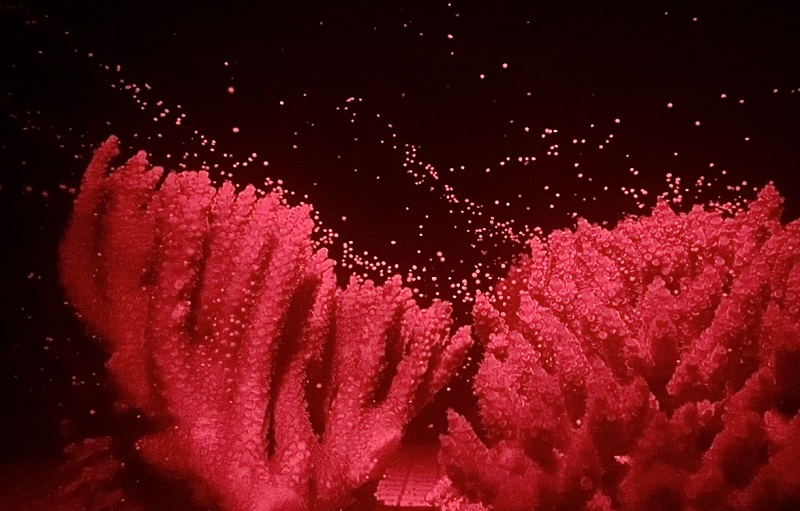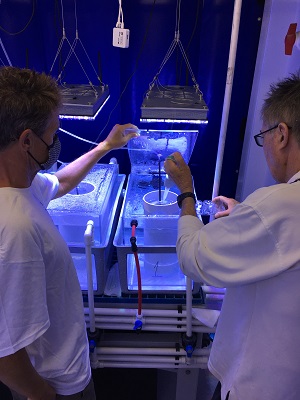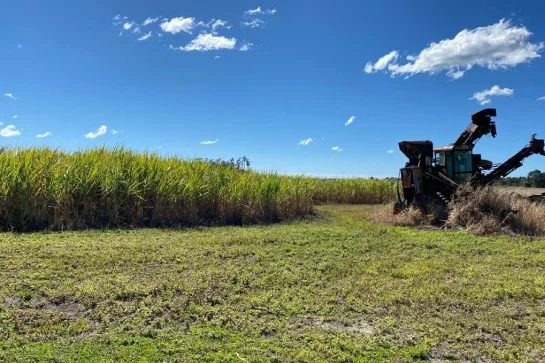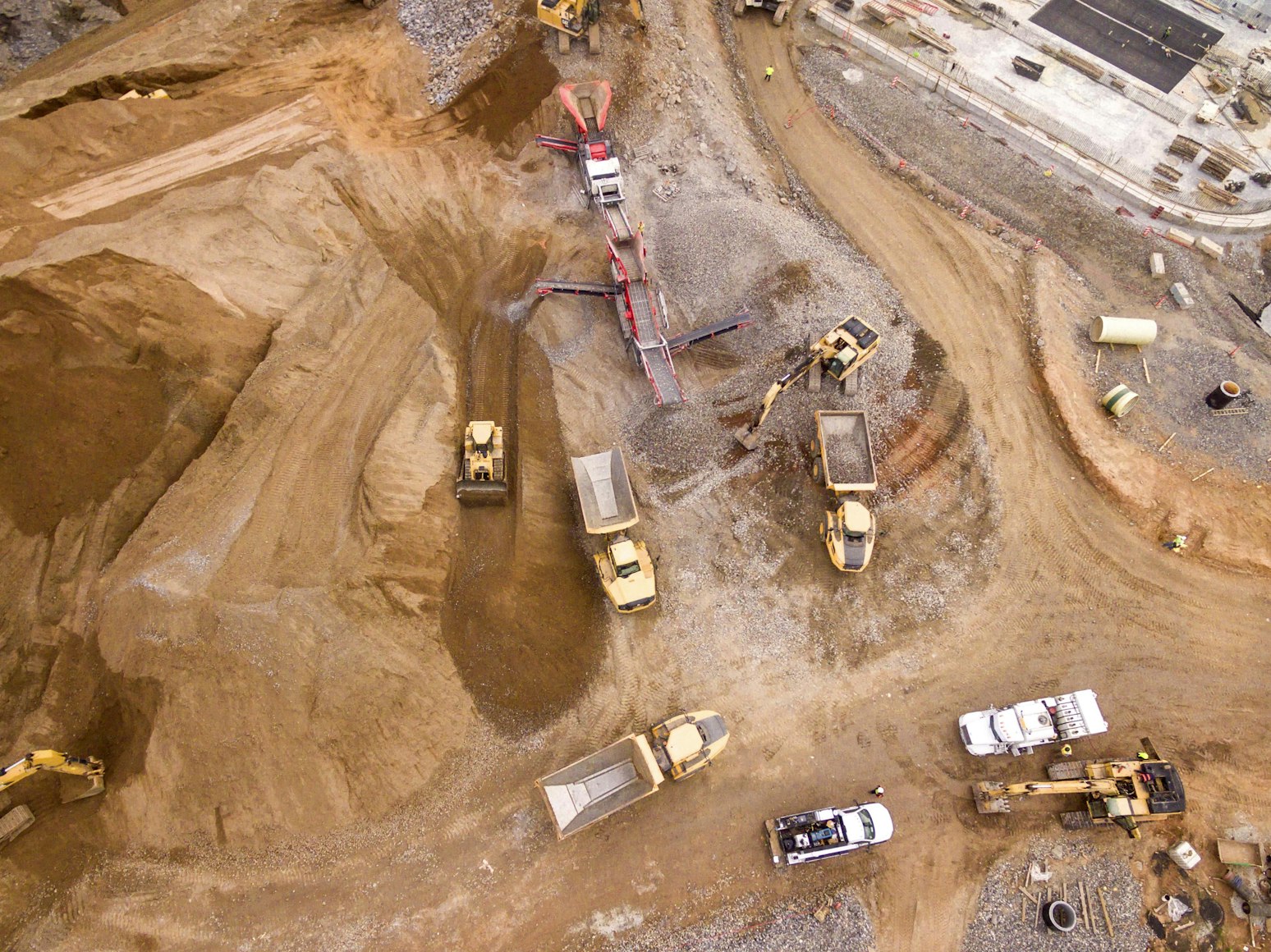During the coral larvae spawning on Ningaloo Marine Park near Exmouth scientists from the Australian Institute of Marine Science and The University of Western Australia are examining why some individual corals are more resilient to heat stress.
The spectacular coral spawning event occurs off Western Australia’s World Heritage Ningaloo coastline each year with corals releasing a shower of tiny gametes into the water column to cross fertilise. The resultant larvae drift with the currents before settling back onto the reef, carrying with them the hope for growing new coral colonies that form the building blocks for coral reef ecosystems.
Spawning has also been successfully simulated for the first time under controlled conditions at Minderoo Foundation’s new Exmouth Research Laboratory.
Lead Researcher from AIMS and the UWA Oceans Institute Dr Luke Thomas said the Exmouth Research Lab, based on technology from AIMS National Sea Simulator in Townsville, gave his team the ability to precisely manipulate the water temperature affecting Ningaloo corals.

“It’s really expanded our capacity to address a range of new questions about coral biology. It also allows us to generate reliable, reproducible data that is a fundamental component of science,” Dr Thomas said.
Once fertilised, the tiny pink coral larvae are left to grow out in big culture tanks for a few days until they are robust enough to transfer to the temperature-controlled room, where the AIMS/UWA researchers expose the larvae to heat stress experiments.
[email protected] PhD candidate Shannon Duffy is working on understanding the genetic drivers and spatial patterns in coral thermal tolerance.
“We’re focused on understanding how much natural variation in bleaching-resistance exists at Ningaloo, and how genetic tools can be used to identify and harness that variation to safeguard the reefs.”
Shannon and her colleagues heat stressed the recently spawned coral larvae and found that some survived at temperatures of 35 degrees Celsius.
After several days, those coral larvae that have proven resilient to heat stress undergo whole genome DNA sequencing to explore the genetic variants that confer this tolerance.
“We look at the larvae’s DNA to find out which genes assist the larvae to survive high water temperatures.
“The research will enable us to understand the natural capacity of corals to adapt to warming oceans so that we can help coral reefs to be more resilient to the effects of climate change,” Shannon said.

Minderoo Foundation Flourishing Oceans Initiative Director Dr Tony Worby said that scientists having the access to high tech facilities built on Ningaloo’s doorstep would improve coral reef research.
“Corals will only spawn in a laboratory when the conditions perfectly replicate nature, so we’re really excited to see the success in spawning Ningaloo corals for the first time. It’s a testament to the quality of the facilities that have been built by Minderoo, in collaboration with AIMS, that we’ve been able to move rapidly towards trying to find some solutions within six months of opening the Lab.” Dr Worby said.
This year’s spawning has the team at the Exmouth Research Lab working alongside a pioneer of worldwide studies into coral spawning, AIMS’ Dr Andrew Heyward.
“This is an important milestone in research at the Ningaloo Marine Park. If we can determine the genetic variants that confer heat resilience in coral larvae, then we can scan the adult populations in the wild for their natural heat resistance.
“We can then focus on protecting those naturally heat tolerant corals or target our restoration efforts using these individuals,” Dr Heyward said.
Feature image courtesy of Blue Media Exmouth.







